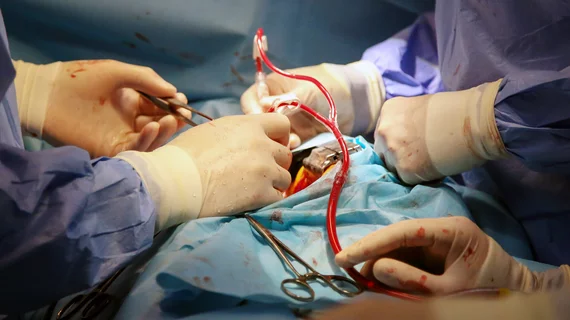Timing is everything: Delaying noncardiac surgery after a heart procedure reduces risks
When patients require both cardiac surgery and noncardiac surgery, what is the ideal timing for those operations? According to a new analysis published in JACC: Advances, waiting at least 100 days after the cardiac surgery before performing the noncardiac surgery is associated with a significantly lower risk of adverse outcomes.[1]
“To assess the cardiovascular fitness of patients to safely tolerate noncardiac surgery, many will receive preoperative cardiovascular diagnostics, including stress tests, echocardiograms and occasionally coronary angiography,” wrote first author Saad Mallick, MD, a researcher with the Cardiac Outcomes Research Laboratory at UCLA Health, and colleagues. “The increasing utilization of such diagnostics and improving safety profile of cardiac interventions, coupled with the aging U.S. population, have resulted in a substantial number of individuals receiving preoperative cardiac procedures prior to noncardiac surgery. However, the optimal timing of noncardiac surgery following cardiac interventions remains unclear.”
The group explored the Nationwide Readmissions Database, focusing on more than 1.3 million adult patients who underwent coronary artery bypass grafting (CABG), heart valve repair, heart valve replacement or a combination of those procedures from 2016 to 2022.
Approximately 1.5% required a subsequent noncardiac surgery. For 52.1% of those patients, the time between the cardiac surgery and noncardiac surgery was 99 days or less. For the remaining 47.9%, the time between the two procedures was 100 days or more. Mallick et al. named these two groups “early patients” and “late patients,” respectively.
The early patients had a mean age of 67 years old, 76.3% were men and 53.4% were high-risk patients. The late patients had a median age of 68 years old, 72.9% were men and 42.8% were high-risk patients. Isolated CABG was the most common cardiac procedure by a significant margin in both groups.
The study’s primary outcome was the occurrence of at least one major adverse event—in-hospital mortality, acute cardiac events, strokes, transient ischemic attacks, thromboembolic events, respiratory complications, acute kidney injury, perioperative bleeding, infectious complications or gastrointestinal complications—following noncardiac surgery. This outcome was seen in 23.3% of late patients and 35.6% of early patients, a significant difference, in an unadjusted analysis. Even after making certain risk adjustments, the authors added, late patients were still associated with a reduced risk of experiencing a major adverse event following noncardiac surgery.
“Noncardiac surgery performed in a delayed manner following cardiac surgery is associated with decreased risk of adverse clinical events,” the authors wrote. “Our data suggest that the optimal wait time is around 100 days, with this relationship remaining present across operative risk categories regardless of urgency. Considering the substantial number of patients requiring cardiac interventions, future work delineating which patients stand to safely benefit the most from delayed noncardiac surgery may help better inform decision-making regarding appropriate management and timing of surgery.”
Click here for the full study.

